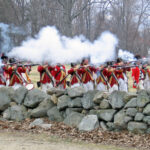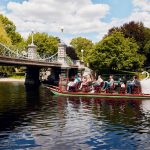Where to Find Early Fall Foliage in New England
If you find yourself hunting for early foliage, there are some fantastic options in New England for those willing to think outside the box.
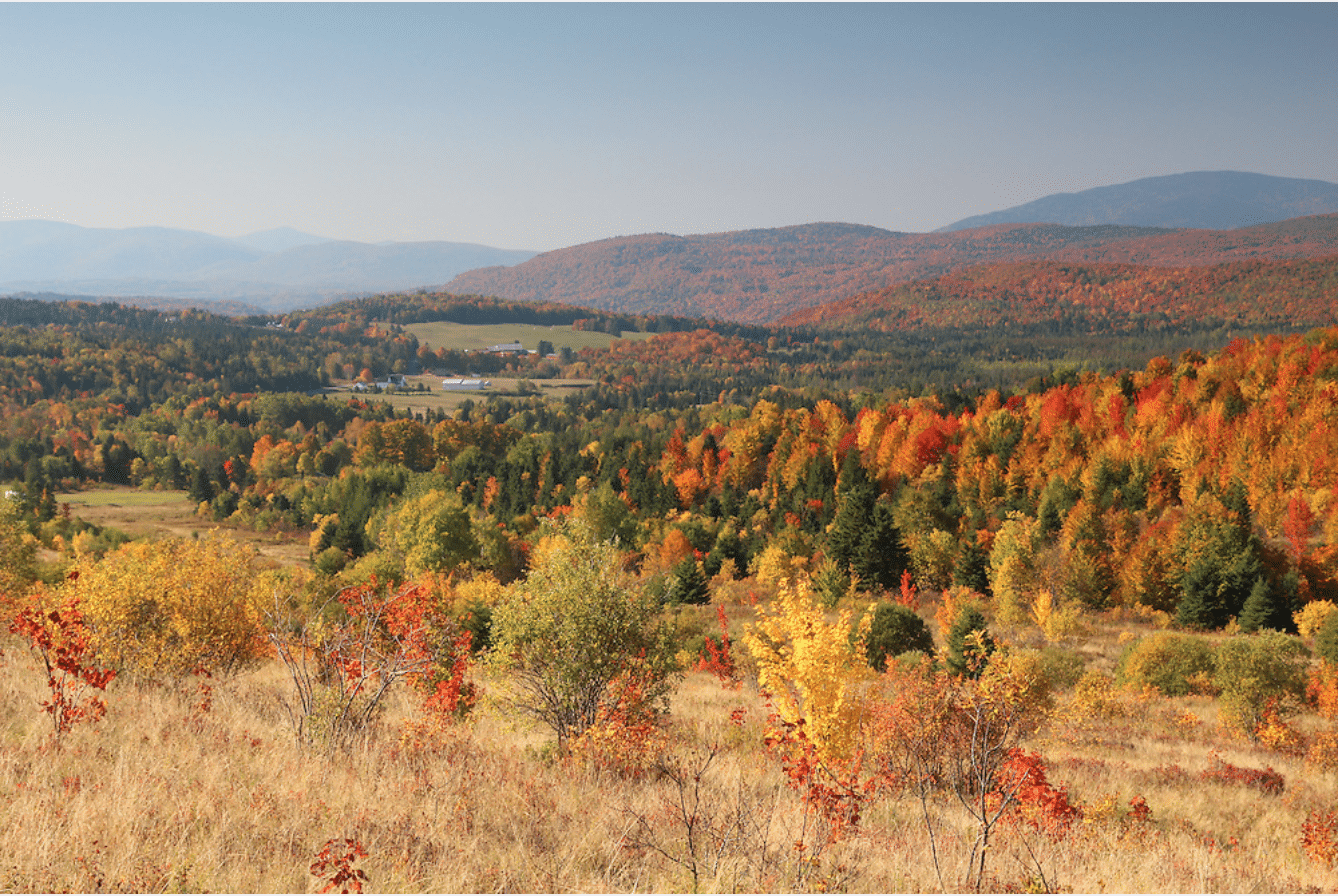
Coffee By Design | Portland, Maine
Photo Credit : Katherine KeenanThe most common question that we get during the fall is “When will it be peak color in New England this year?”
Every year in mid-August we provide an annual fall foliage forecast, which predicts whether the foliage will be early or late based on the average peak times for any given area. But given the diversity in landscapes, from New Hampshire’s lofty White Mountains to southern Connecticut on the Long Island Sound, the wave of peak foliage actually takes almost two months to completely slide across the region. Fortunately, we provide many tools to help leaf peepers dial in their timing, including a peak prediction map, state foliage guides, and real-time weekly color updates starting in late September.
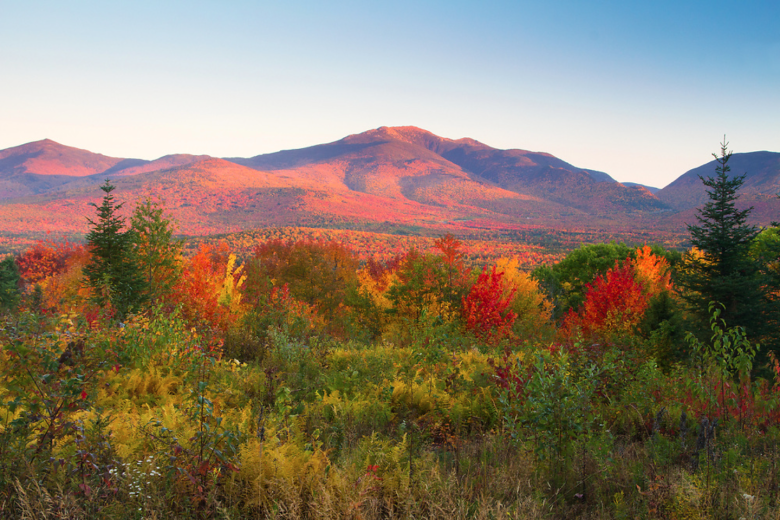
Photo Credit : Jim Salge
Still, not everybody experiences mega-peak. Inevitably, some visitors mistime their trips and have to hunt for patches of early color, but fortunately, there are some fantastic options for those willing to be flexible or think outside the box.
So if you show up too early, where should you go? Read on.
Where to Find Early Fall Foliage in New England
Head North
The earliest fall foliage in New England emerges far north, in some of the most remote, scenic, and quaint areas of the region. The Crown of Maine, the Great North Woods of New Hampshire, and Vermont’s Northeast Kingdom usually see their first frosts in mid-September and can see peak colors as early as the autumnal equinox on September 22.
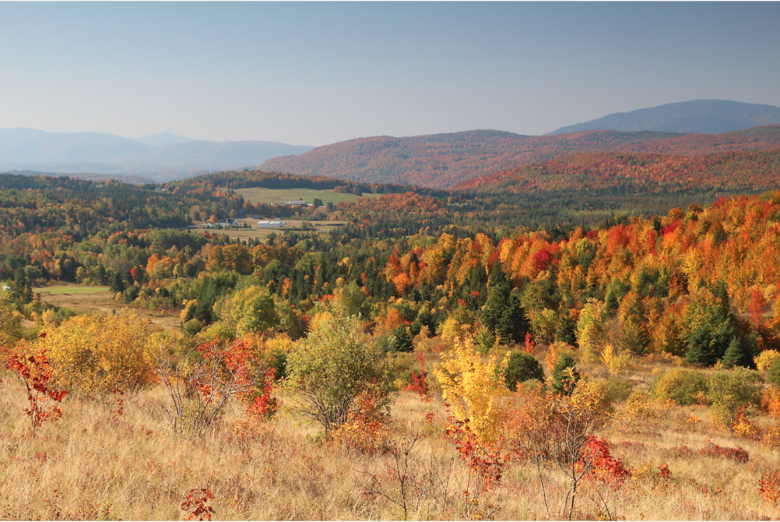
Photo Credit : Jim Salge
By late September, you can usually start to see high or peak color in the Northern White and Green Mountains, as well as the mountains of western Maine. So while the big three-day weekend in October is a great time to visit northern New England, you can definitely find earlier color by pointing the car towards the Canadian Border.
Head “Up”
The mountains of northern New England have a climate all their own; especially Mount Washington, which is renowned for some of the worst weather on Earth. As you head up in elevation, temperatures drop, and fall color shows up earlier and earlier. Mixed in with spruce and fir, the region’s mountaintops usually have sugar maple, beech, and birch — all of which can turn significantly earlier than the surrounding valleys.
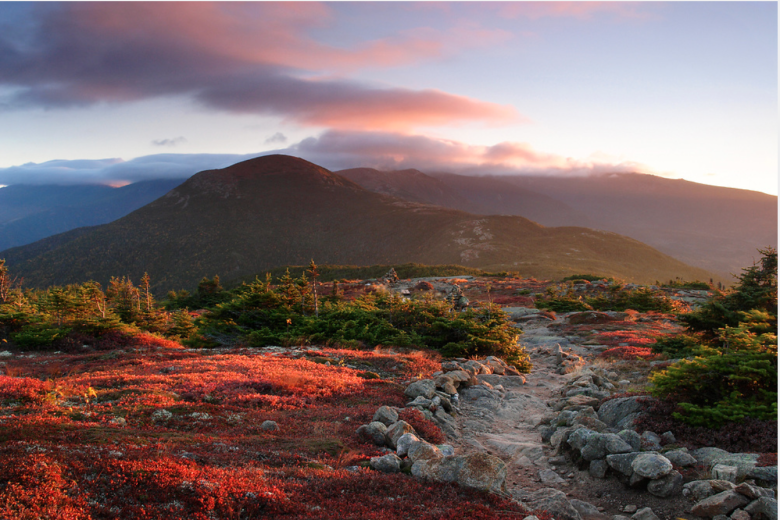
Photo Credit : Jim Salge
There are many ways to see the highest elevations in fall. Most popular is on foot via the thousands of miles of trails that traverse the peaks, but there are also many drive-up mountain summits that get you there a little easier. For a truly unique experience, try leaf peeping above the trees on New Hampshire’s Presidential range, where the landscape is akin to the alpine tundra, with sedges, bilberry, and willows peaking in early to mid-September.
Get on the Water
While New England is known for the sugar maples that provide us with both beautiful fall colors and sweet syrup, another maple species offers an early preview of autumn colors. Red maples prefer more moist habitats, and red maple wetlands are a common ecosystem surrounding inlets and outlets of lakes and ponds, as well as lining slow-moving streams and rivers.
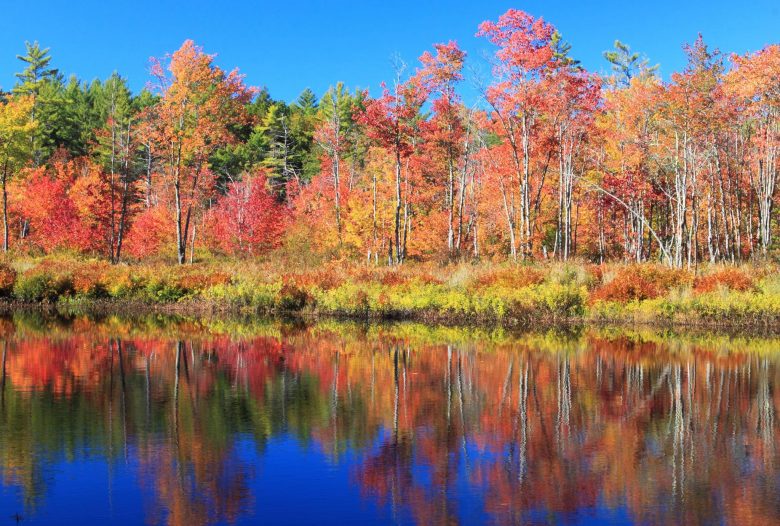
Photo Credit : John Burk
As early as mid-August, these so-called “swamp maples” begin to produce bright red pigments in response to the stress of growing with their feet wet for much of the year. And counterintuitive to the conventional knowledge of the rest of the forest, the wetter the summer and fall season is, the brighter and earlier the colors tend to be.
While it’s easy to find them by car, while the weather is still warm, canoeing and kayaking are great ways to get outdoors and see these beautiful early-turning trees.
Visit an Ancient Bog
When the glaciers receded at the end of the last ice age, thousands of kettle hole depressions were left behind. Over thousands of years, they first filled with water, then thick mats of peat moss. While only replenished by rainwater, these bogs are usually very acidic and lacking in nutrients, and therefore support only very specific species of plants that can handle surviving those stresses. Many of the small specialist plants that grow in the bogs produce red anthocyanins early in the fall, including sundews, blueberries, and red maples. Cranberries, as well as the mosses themselves also provide pops of color.
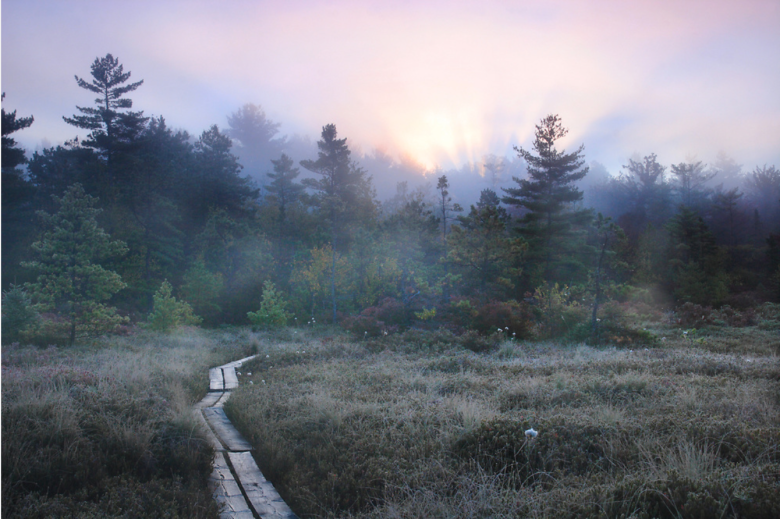
Photo Credit : Jim Salge
Some of the many bogs in New England have boardwalks that allow you to access their soggy interiors include:
- Ponemah Bog and Philbrick Cricenti Bog in NH
- Saco Heath and Bangor Bog in ME
- Peacham and Eshqua Bogs in VT
- Simsbury Land Trust Bog in CT
Of note, another bog species, the eastern tamarack, is one of the last trees to turn in the fall. These areas are also worth visiting as the surrounding forests slide past peak to see their golden yellow needles.
Admire Dry Ledges
Ledges and rock outcroppings tend to be tough places for plants to grow. Limited water and thin soil keep plants stunted and stressed. In response to this stress, the shrubs and small trees that do manage to grow there tend to turn early and brightly each season.
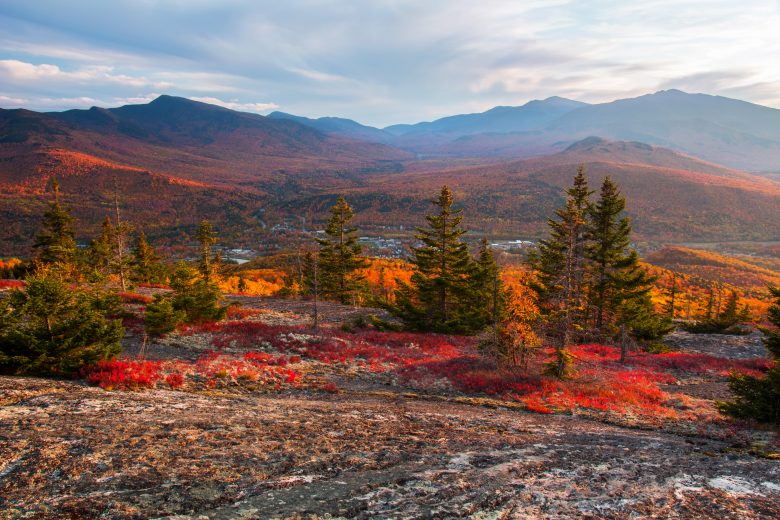
Photo Credit : Jim Salge
Two of the most common plants to grow on rocky ledges are lowbush blueberry and black huckleberry, and both can burn blazing red in the fall. Viewing their leaves when backlit by late-day sunlight can make for especially photogenic foregrounds.
…And More!
While the fall colors are the real draw in New England each year, fall in New England isn’t just about the foliage. If you’re too early for the foliage, there are always other classic autumn activities to hold you over. Take advantage of apple picking, corn mazes, agricultural fairs, Octoberfests, harvest festivals, and many other events that are held each weekend throughout the region to keep you in the autumn spirit until the color arrives in your backyard.
We hope that these suggestions help you extend the leaf-peeping season a bit this year!
Planning a New England Fall Foliage Adventure? Don’t Miss:
10 Places to Visit in New England in Fall
These 10 places to visit in New England in fall are a great way to kick off an entire weekend of fun.
Favorite Fall Foliage Drives in New England
Use these driving directions to find the best slow fall foliage drives in New England.
Best Corn Mazes in New England
Here’s where to tackle a corn maze from Maine to Rhode Island.
Best Apple Orchards in New England
Yankee senior food editor, Amy Traverso, provides a list of the best apple orchards in New England.
Fall Foliage Train Tours
Fall foliage train tours are a great alternative to driving.




